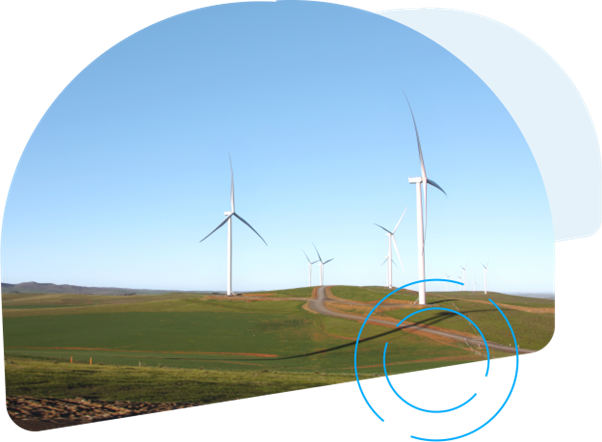Error message title

Error message title
Searching great energy plans for you
Canunda Wind Farm
The Canunda Wind Farm’s contribution to a future of batteries, solar and wind.
The construction of the Canunda Wind Farm was one of ENGIE Australia’s distinctive contributions to our vision to accelerate Australia’s transition towards a carbon neutral economy.
It is located just south of Millicent in South Australia and, in this prime location, it is able to produce electricity 34 per cent of the time, which in comparison to global standards is a very high wind yield.
The 8km long site contains 23 turbines reaching heights of 107 metres from the base of the tower to the tip of the blade.
They can generate power from wind speeds as little as 4m/sec and produce maximum energy at 14m/sec.
On the windiest of days, they can reach speeds of up to 25m/sec which is 90km/h.
Canunda has the capability of generating a total of 46MW of electricity. This output can supply power to an average of 30,000 homes across South Australia. The power is transported through 14km of 33,000-volt transmission lines to the nearby Snuggery substation, located next door to ENGIE’s main Snuggery power station.
Overview
Location: Millicent, South Australia
Maximum Capacity: 46 MW
Commissioned: March 2005
Features
- 23 Turbines
- 46 MW of electricity generation
- Powering 30,000 homes
- 34% wind yield
- 39 metre turbine blade spans
- Turbine speeds of up to 90km/h
How does a wind turbine work?
Wind as an energy source is plentiful and renewable. All over the world, wind turbines capture power from the wind and convert it into electricity.
The Global Wind Energy Council has reported that wind energy could make up 20 percent of worldwide electricity production by 2030. Today, it’s at 4 percent. This production could create 2.4 million new jobs and reduce CO2 emissions by more than 3.3 billion tons per year.
ENGIE supports the transition to a carbon-neutral economy, in part, by investing in wind farms in Australia and all around the world.


